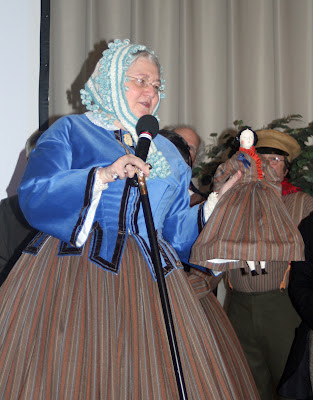Westtown Friends Boarding School was founded in 1799 by the Philadelphia Yearly Meeting of the Religious Society of Friends for the purpose of providing a “guarded education” for its children.
The curriculum for Westtown students during the early years included reading, penmanship, grammar and mathematics. Geography and science (including astronomy) were taught, the latter often during evening lectures. Surveying and bookkeeping, useful in future vocations, were offered. Formal religious instruction in the principles and testimonies of Friends was introduced in 1833.
The education offered boys and girls at Westtown was much the same even in the very early years of the school (reflecting the Quakers' belief in the equality of all people.) One difference, however, was sewing class for girls. Plain sewing, samplers, pin cushions and other handiwork were done by girls until sewing class was eliminated from the curriculum in 1843."Girls are also to bring with them a pair of Scissors, Thread-case, Thimble, Work-bag, and some plain sewing or knitting to begin with." Information for Parents, Westtown School, 1799
Much of Westtown’s well-known needlework collection will be part of an exhibit at Chester County Historical Society in West Chester, on view from December 2, 2011 through September 7, 2012. IN STITCHES: Unraveling Their Stories will provide a rare opportunity to see large portions of both Westtown and CCHS’s needlework collections. The exhibit will feature many samplers and embroidered globes made by girls at Westtown School, along with a variety of other samplers and needlework items made by girls from Chester County and the surrounding area 200 years ago. Stitched under the direction of a sewing teacher or female family member, these commonplace pieces have become heirloom treasures that provide an opportunity to tell each maker’s story, as well as document the patterns and practices of needlework in particular locations.
I had the opportunity to view this exhibit earlier this month and I have to say if you have any interest whatsoever in historic needlework, you MUST find a way to see this exhibit!
Allow yourself plenty of time, not only is this particular exhibit fabulous, but so is the entire Chester County Historical Society museum. Even better, they do allow photography for personal use. I would like to offer the museum my sincere thanks for giving me permission to share these photos with you.
The work shown is simply incredible in it's execution and charming in it's design - I love this fanciful map:
And these pinballs are both beautiful and useful:
Embroidered globes, both terrestrial and celestial were used to teach geography, real globes were expensive; thus, a stitched globe was an economical way for a young girl not only to learn her lessons but to practice her needlework.
Piecework Magazine ran an article on these globes, instructions and patterns are available here.
These pieces offer so much inspiration and for me, it was a joy to see all the botanical influences.
I'm sure many of my fellow Civil War enthusiasts are saying, "but this is too early, what does it have to do with our era?". I agree, it does pre-date "our" era, but so do we, unless we were born in 1861. I'm of an age that I might have attended such a school and if so, I'm sure I would still have this type of needlework in my possession - I might even still display it in my parlor.
The needlework being produced in the 1860's owes its origins to the girls who learned their stitches in earlier decades and taught their daughters and granddaughters. While we dread the all-to-common period instructions "any lady can create this item based on our illustration", the ladies of the time really could!




















































